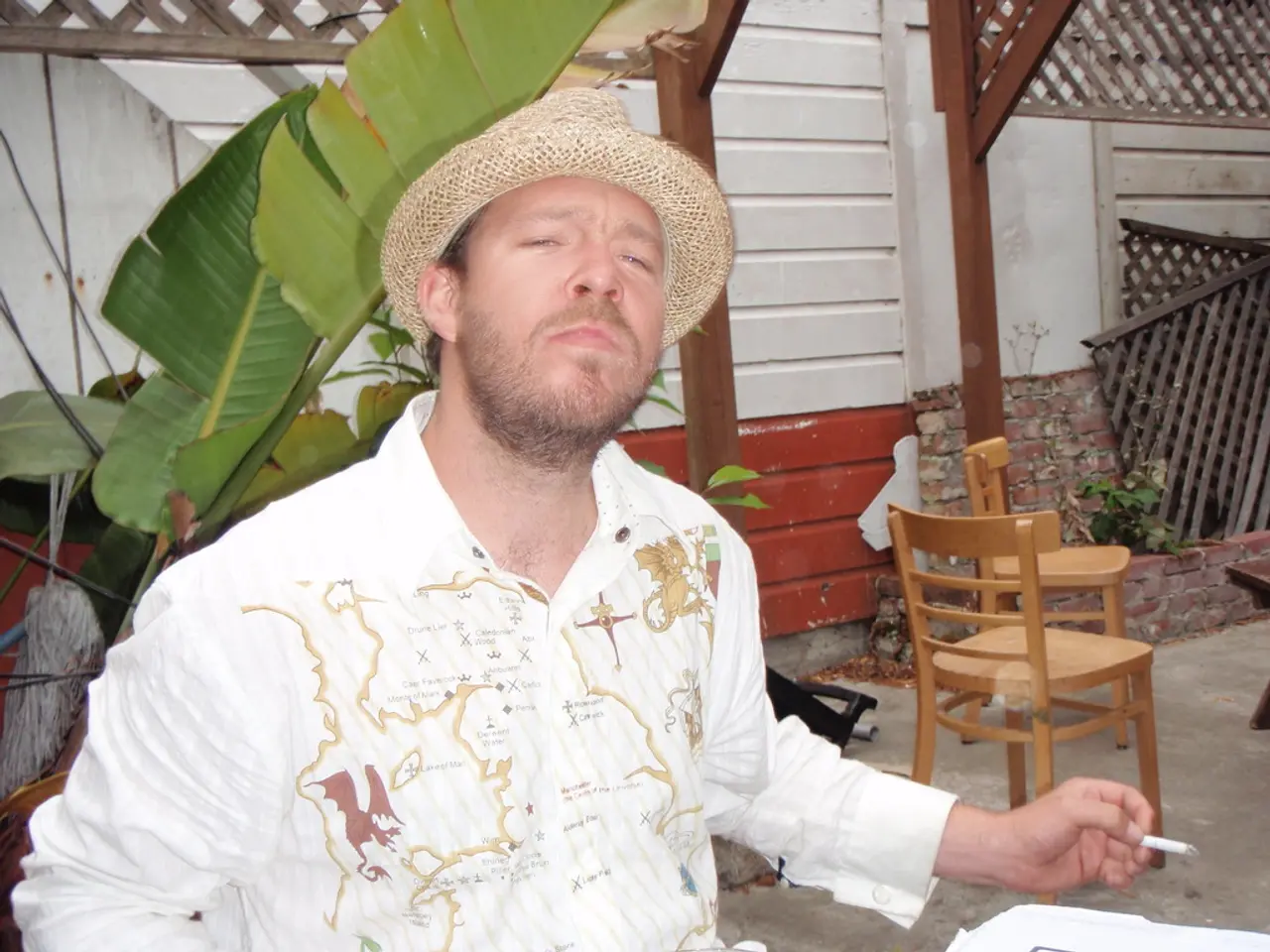Transforming Spaces through Regenerative Agriculture via Permaculture
In a world where stress levels are sky-high and mental health issues are on the rise, a new movement is gaining traction - permaculture. This innovative approach to gardening and land management offers more than just a greener thumb; it's a holistic solution for creating healing spaces that nourish both our minds and our planet.
Being in green spaces can lower stress by 30%, while gardening can cut anxiety and depression by up to 40%. Permaculture takes this a step further, integrating biophilic elements like diverse plant life, natural textures, water features, and maximizing views of nature to collectively lower stress hormones like cortisol and engage the parasympathetic nervous system.
One of the key strategies in permaculture design is the integration of biophilic elements. Incorporating indoor and outdoor plants, natural materials like wood and stone, and nature-inspired artwork can nourish the nervous system and reduce stress. Creating gardens with high plant diversity and canopy cover also improves mental health while boosting biodiversity.
Using design features rooted in permaculture such as herb spirals, mandala gardens, and forest gardens can create aesthetically pleasing, functional spaces that encourage engagement with nature and mindfulness. Designing zones around the home for different uses, such as food production zones close to living areas combined with recreational and wildlife-friendly zones, supports interaction with nature, which aids stress reduction and mental clarity.
Creating sanctuary spaces within the garden, with canopy cover and comfortable seating, encourages relaxation, meditation, or mindfulness practices. Applying the permaculture principle of “Observe & Interact” to understand the site’s natural patterns and design accordingly creates spaces that resonate with the local ecosystem and the users’ mental needs.
Eco landscape designs that promote community connections and social bonds also contribute positively to mental health and collective healing. Engaging local communities needs regular community workshops, skill-sharing platforms, collaborative garden projects, and permaculture design certificate programs. Support networks help by sharing knowledge, working together, and helping each other, allowing permaculture communities to share resources, provide emotional support, develop collective problem-solving skills, and create lasting social connections.
Starting regenerative design projects requires smart money plans, such as crowdfunding for eco-projects, community investment groups, and local grants for green projects. Permaculture offers a special way to think about money and resilience, going beyond traditional finance. Long-term planning is essential for sustainable living, including building strong community networks, developing adaptive management techniques, creating flexible implementation frameworks, investing in continuous education, and maintaining psychological resilience.
The U.S. can lead the way to a better future by embracing permaculture principles. The "7th generation principle" guides permaculture to think about the future, focusing on the long-term health of the soil and ecosystems. Permaculture is about building strong communities and working together, creating bonds that help the environment and society.
With its focus on mental health, stress reduction, and community building, permaculture is more than just a gardening technique - it's a lifestyle choice that promotes a healthier, more sustainable future for all.
- Permaculture, a revolutionary approach to gardening and land management, offers a holistic solution for creating healing spaces, promoting mental health and reducing stress levels.
- Incorporating biophilic elements such as native plants, diverse plant life, and natural textures in both indoor and outdoor spaces is a key strategy in permaculture design to nourish the nervous system and reduce stress.
- Compact, aesthetically pleasing designs like herb spirals, mandala gardens, and forest gardens can create functional spaces that encourage engagement with nature and mindfulness.
- Water management, a crucial aspect of permaculture, involves using swales and rainwater catchment systems to conserve and nurture soil health while promoting biodiversity.
- Composting organic waste not only enriches the soil but also supports regenerative practices that contribute to sustainable living and environmental-science.
- companion planting, a permaculture technique, allows plants to coexist harmoniously, improving soil health and enhancing the productivity of the garden.
- Creating sanctuary spaces within the garden, with canopy cover and comfortable seating, promotes relaxation, meditation, or mindfulness practices that contribute to mental-health and well-being.
- Permaculture design focuses on the long-term health of the soil and ecosystems, moving towards economics that prioritize sustainability and community connections, rather than traditional finance.
- Engaging in education-and-self-development platforms like community workshops, skill-sharing platforms, and permaculture design certificate programs fosters growth, camaraderie, and collective healing.
- With a focus on health-and-wellness, stress reduction, and community building, permaculture represents a lifestyle choice that encourages sustainable living, environmental-science, and stewardship for future generations.




